How Often Do You Water Snake Plants? (Watering Care Guide)
If you just received a beautiful new snake plant, you may be wondering: how often do you water snake plants? Welcome to the most thorough snake plant watering guide on the web!
The snake plant is a modern and elegant indoor plant with vibrant green and yellow spikes. With upright leaves and bright stripes, she is one of the most aesthetically pleasing indoor plants.
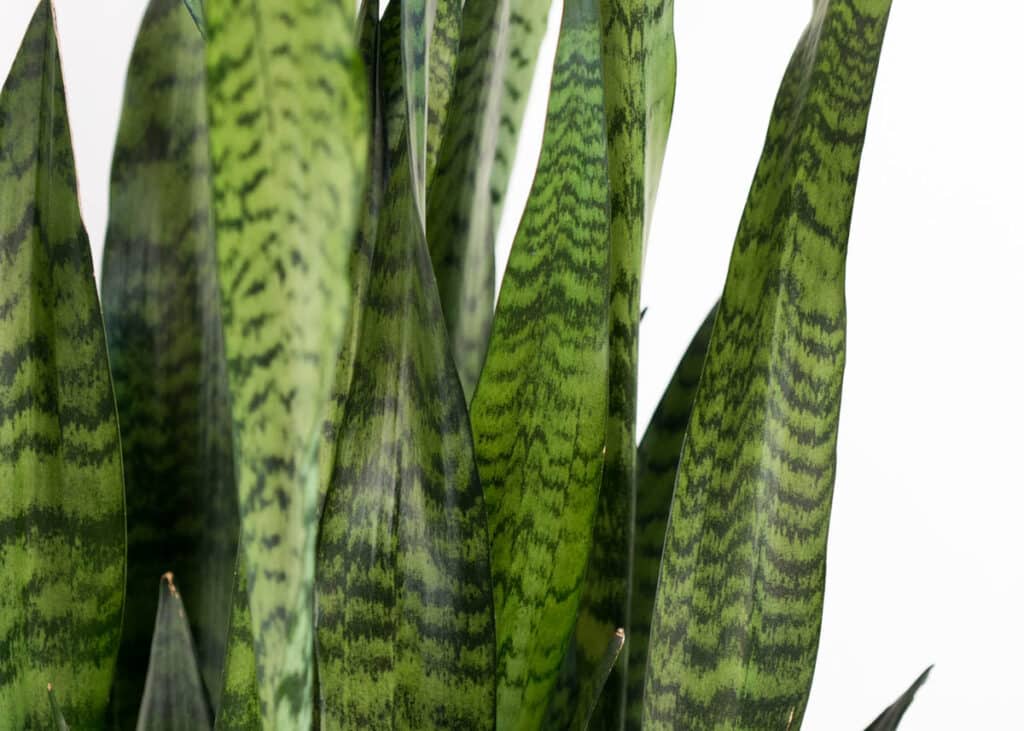
How Often Should You Water A Snake Plant?
The quick answer on how often to water snake plants:
Snake plants can go a long time without water! Do not water until the soil is completely dry, which in average conditions is about two weeks. Make sure to look beneath the soil surface! Once the soil is completely dry, deeply water your snake plant and then let her rest and dry out for several weeks before watering again, depending on your specific growing conditions.
We polled an experienced group of indoor plant owners, and 76% of the snake plant owners watered their plants every 2 to 4 weeks. (See more on our study below).
If you tend to be overly generous with watering your plants, embrace the mantra that less is more with snake plant hydration!
That being said, you don’t want to completely neglect this snazzy succulent. Like any plant, snake plants need just enough water to thrive.
Snake plants have grown in popularity because of their reputation for being a resilient house plant that is easy for new indoor gardeners. Also known as mother-in-law’s tongue, this easy to grow succulent is nearly indestructible.
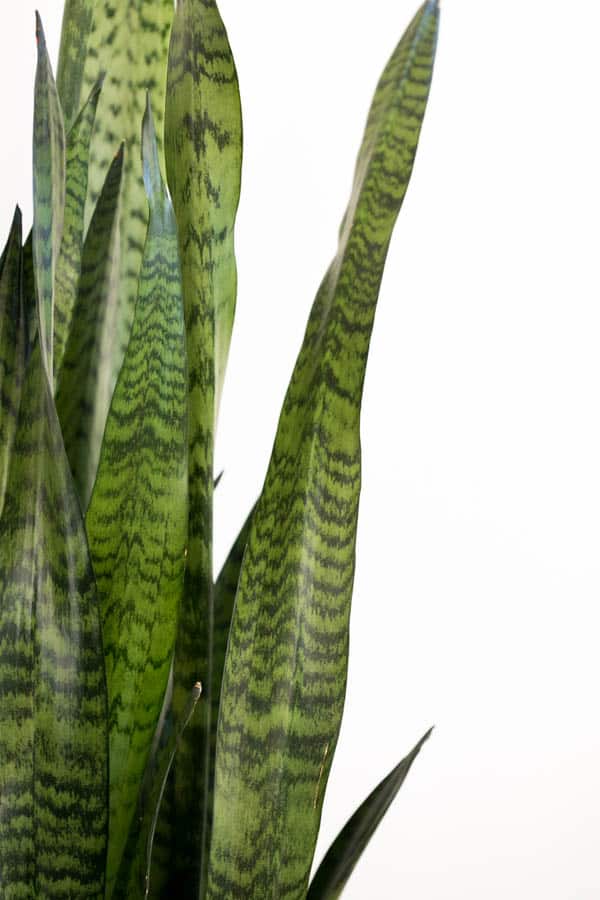
So how much water, exactly, does a snake plant need… and how often should this desert growing plant be watered? We’ll discuss the exact amount of water in depth here, as well as diving into several nuances of a snake plant’s water needs.
Read the entire article to learn how to avoid common problems and expert insight from snake plant owners throughout the country.
If you’re looking for a plant that’s tough to kill and always looks chill, consider the snake plant. This indoor succulent is nothing short of a miracle; she tolerates low light, little water, and actually thrives on neglect.
This site contains affiliate links. If you click through a link and make a purchase, we may make a small commission at no extra cost to you. Thank you.
Snake Plant Native Habitat
When determining a plant’s water needs, it is vital to consider the natural habitat of the plant.
Snake plants, or Sansevieria trifasciata, naturally grow in dry, arid regions in Africa with little rainfall. Their water needs certainly reflect this warm, low moisture natural habitat.
Taking her natural growth habit in consideration, we see that snake plants need an arid climate, well draining soil and good drainage. They may go many days or even months without water.
There are many snake plant varieties, but by and large they all thrive off of very little water.

How To Check Water Needs
A snake plant’s native habitat shows that watering requirements for this hardy plant are minimal.
Snake plants have shallow roots, called rhizomes, that rot easily with too much water, so it’s best to let your plant do the talking when it comes to how thirsty she is.
Let your snake plant tell you when it wants water through the soil moisture. This is the best way to determine the water needs of your plant.
Once the top of your snake plant soil has dried out to the touch, check the inner layers of soil for moisture. Stick your index finger into the surface of the soil to see what lies beneath.
If the soil is still damp beneath the surface, then your plant does not need water.
You can also use a dry wooden stick and gently shove it into the soil. If the stick comes out clean, the soil should be watered. If there is moist soil on the stick when you remove it, then there is plenty of moisture in the soil and you do not need to water.
Alternatively, a soil moisture meter can give you a very precise reading.
Did you know? Snake plants are actually a type of succulent plant. Those thick fleshy leaves with the pretty yellow veins are secretly storing water like a camel in the Sahara desert. Snake plants are truly one of the easiest houseplants to grow. Though she makes a stately and unique aesthetic impact, she requires very little care.
How To Water
Once the soil is completely dry, water snake plants deeply and thoroughly soak the soil at the base of the plant. When you see water emerge from the bottom of the pot your snake plant has received enough moisture.
Think of watering your snake plant like a torrential desert rain pour that soaks the earth but quickly disappears.
The Best Water For Snake Plants
The best water to use for your snake plant is water that is chemical free and a has a neutral pH level.
Rain water and filtered water meets these objectives and can be extremely inexpensive, even free!
Simply collect rain water in a container outside your home or near your gutter and use this to water your plants. Rain barrels are an extremely popular and efficient way to collect rain water.
Tap water can be used for watering snake plants, but may not be the best choice. Because of the chemical additives in treated water this is not the best source of water for your plant. If you are using tap water be sure to filter it first.
Also note that water softeners will add too much salt for house plants.
Factors That Affect How Quickly Snake Plants Dry Out
There are many different factors that affect how quickly snake plant soil will dry out. Humidity, changing seasons, container size and material, temperature, soil type and light can all affect the water needs of a snake plant. We cover all of these factors in depth here:
Soil
Well-draining soil is essential for growing a healthy snake plant. The potting mix used in a specific snake plants environment will affect how quickly the water evaporates and how much moisture the soil retains.
Heavy soil that retains water will encourage root rot. A light, loamy soil is essential for water drainage. Keep these requirements in mind when choosing the type of soil for your snake plant.
Container/Pot Type
The type of container a snake plant lives in will affect how quickly the water evaporates.
Terracotta pots are the best choice for snake plants as they allow moisture to evaporate through the pores of the container. This allows the soil to dry out thoroughly and quickly.
Plastic containers do not have the permeability that terracotta has, trapping moisture within rather than letting it escape.
That being said, either type of container can work if you have proper drainage holes in the bottom of the container. Water loss will be quicker with terracotta, but the plant root system will be healthier.
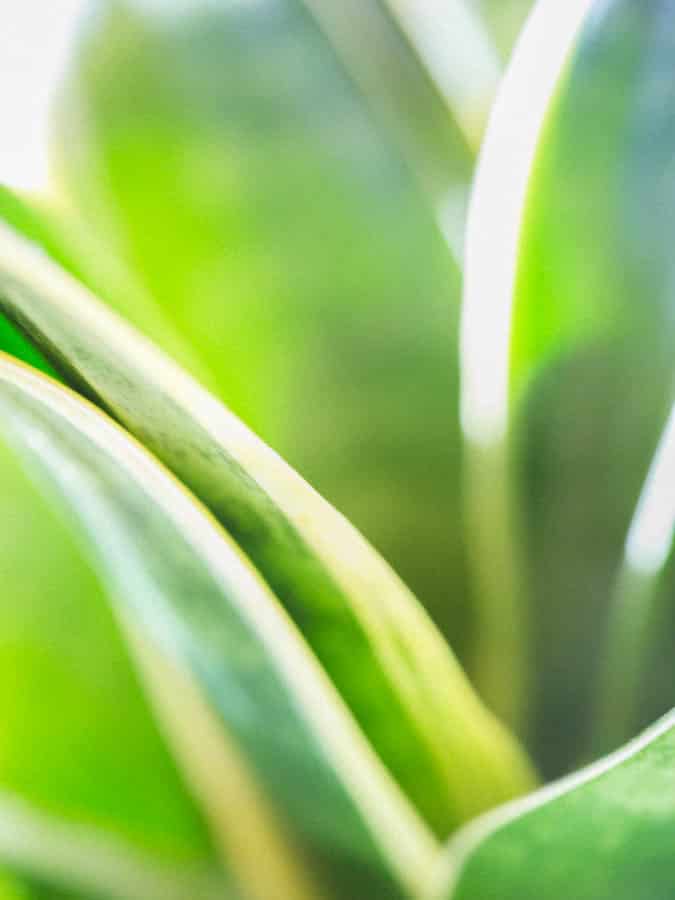
Drainage Holes
In order to keep a snake plant’s root system healthy you must have a container with drainage holes in the bottom.
Without drainage holes excess water will sit in the bottom of the pot causing the plant to rot. If you purchase a plant without drainage holes you can easily drill a few in the bottom of the container.
Don’t skip out on the drainage holes or your plant will develop root rot and die. Switch to a different container if necessary!
When watering, set the pot on a plant saucer or a flat plastic container to catch the runoff as it drains out after watering your snake plant. If you have a small plant, simply set your snake plant in the sink or shower when watering.
Humidity
Levels of humidity will also affect how often you need to water your snake plant. Humidity is simply the amount of water vapor that is in the air.
In areas with less humidity, the plant will dry out more quickly than in areas that have high humidity (lots of moisture), in the air. Low humidity causes the moisture within the leaves to evaporate more quickly from the plant.
For example, someone living in Arizona will have less moisture in the air than someone living in Oregon. The person living in Arizona will need to water their snake plant more frequently. (You may also need to consider adding other forms of moisture such as misting or a humidifier).
Humidity can also change with seasons and the habits of the home. If you use a wood burning stove during winter, the air can become very dry, even if the outside air is humid. This can cause increased thirst of an indoor plant.
Snake plants enjoy a balanced humidity level of about 40-50%.
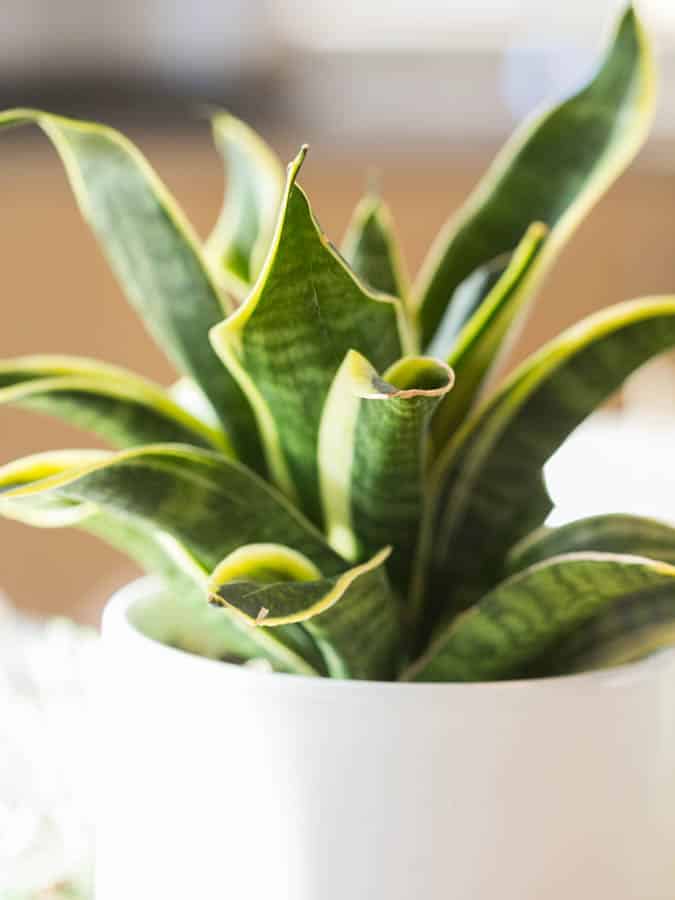
Light
There is a direct correlation between how much light a snake plant receives and how quickly excess water evaporates.
With bright light the soil will dry out faster. And in a low light environment the soil will stay moist longer.
During low light winter months this may mean you do not need to water your snake plant as frequently. And in summer months you may need to water more frequently. Always check for dry soil before watering, especially when there are changes in the environment.
Snake plants prefer bright, indirect sunlight and it is a good idea to keep them out of intense afternoon sun, as direct sunlight can cause the leaves to burn. As seasons change, monitor the amount of light and move your snake plant into a brighter or less intense location if necessary.
Dry Air/Indoor Temperature
High temperatures and dry air will also cause water to evaporate from the top of the soil more quickly. Dry conditions lead to excess moisture evaporating and an increased need for water.
Try to keep snake plants away from dry air and keep the temperature around 65-75 degrees. Many gardeners mover this plant to an outdoor patio with indirect light during warmer months, and adjust watering routines as needed.
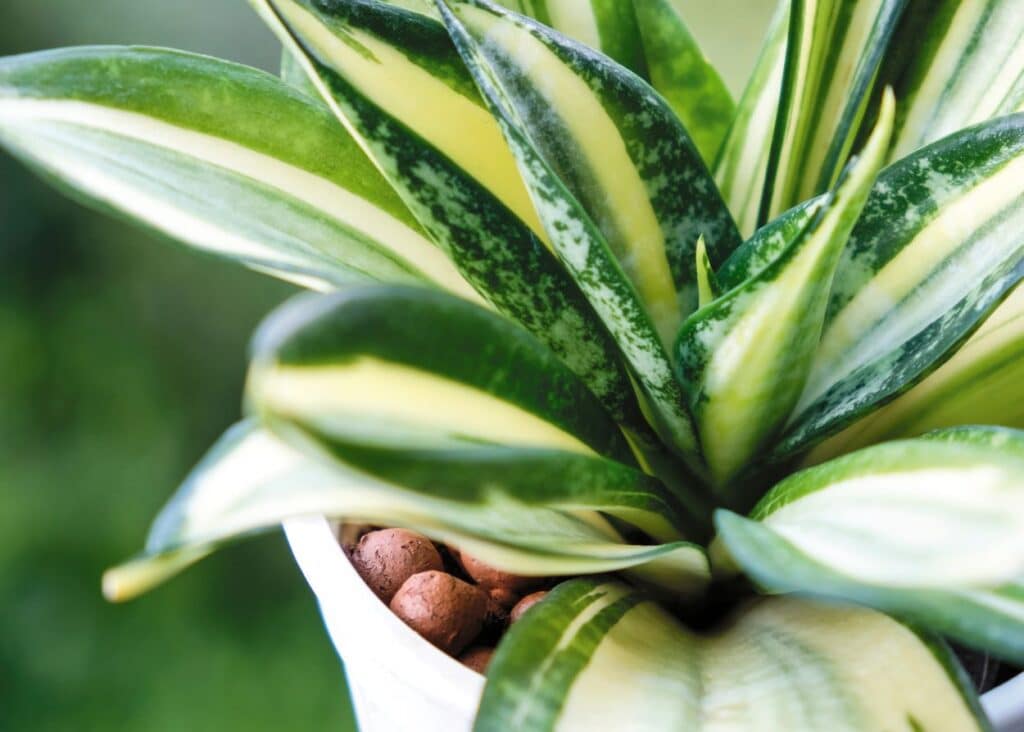
Over Watered Snake Plant
A snake plant that receives too much water will quickly show signs of distress. Excess moisture will cause a healthy plant to have the following symptoms:
- Yellowing leaves While there are different types of snake plants, in general the leaves of a snake plant should be a vibrant green with yellow highlights or stripes. They can also have black, dark green, or light green highlights. When the plant is over watered, the background green color will begin to turn yellow.
- Droopy leaves Snake plan leaves are usually erect and firm, indicative of the strong plant within. When too much water is applied, these leaves will start to droop, showing sings of distress.
- Mushy leaves that loose their shape due to the excess water
- Brown leaf tips: Sometimes when snake plants are over watered the end of the leaf tips will turn brown.
- Dark Spots Near Base Of Plant: Dark areas where the plant leaf is decayed and rotten is a definite sign of too much water.
- Foul Soil: Soil can develop a foul or rotting smell due to root rot. Excess water will lead to root rot, where bacteria and fungus throw a party in the excess moisture. Root rot will lead to foul smelling soil, and black and decaying roots beneath the surface.
Saving Over Watered Snake Plants
Snake plants are extremely resilient and can usually be saved if the over watering stops. To save a drowning snake plant, following these steps:
- Stop watering the snake plant (this may be obvious but we want the root ball to dry out now, so it’s time to take a long break)
- Remove the snake plant from the soil and set the root ball on it’s side in a dry, arid location
- Let the soil dry thoroughly
- Re pot your snake plant, making sure to use the right type of soil and adjust watering routines. Wait for the soil to dry out thoroughly!
Snake Plant Watering Statistics
We polled a group of real life snake plant owners to get a wide variety of real hands on experience.
These numbers represent how indoor gardeners care for their snake plant all over the United States:
- 53% of snake plant owners water once a month
- 23% of snake plant owners water every 2 weeks
- 23% of snake plant owners wait to water every 2 months or longer
As you can see, this versatile plant can withstand a wide array of watering approaches. Remember that each plant is grown in a different environment with different conditions that affect water needs including light, humidity and container size.
Best Tips From Indoor Snake Plant Owners
Here are some of the best tips we compiled from real snake plant owners on how to take care of a snake plant:
“I have at least 15 indoor snake plants. I allow the soil to completely dry out between watering to prevent root rot, and use a moisture meter to be accurate. Depending on the size of the pot I water mine every two weeks to one month.” -Marissa B.
“I live in a dry climate in Canada. In the summer when it gets very hot I water every 3 weeks. In the cooler winter it’s every 1.5 months. It also depends on the size of the container: mine is a large snake plant.” -Jennifer M.
“I water all my snake plants roughly once a month. Mine typically get similar light conditions year round, medium to bright indirect light, so watering tends to be the same from season to season. My best advice is to just enjoy them. Put them in a bright spot, water infrequently but thoroughly and enjoy! They’re one of my favorites because they’re so easy.” – Chris M.
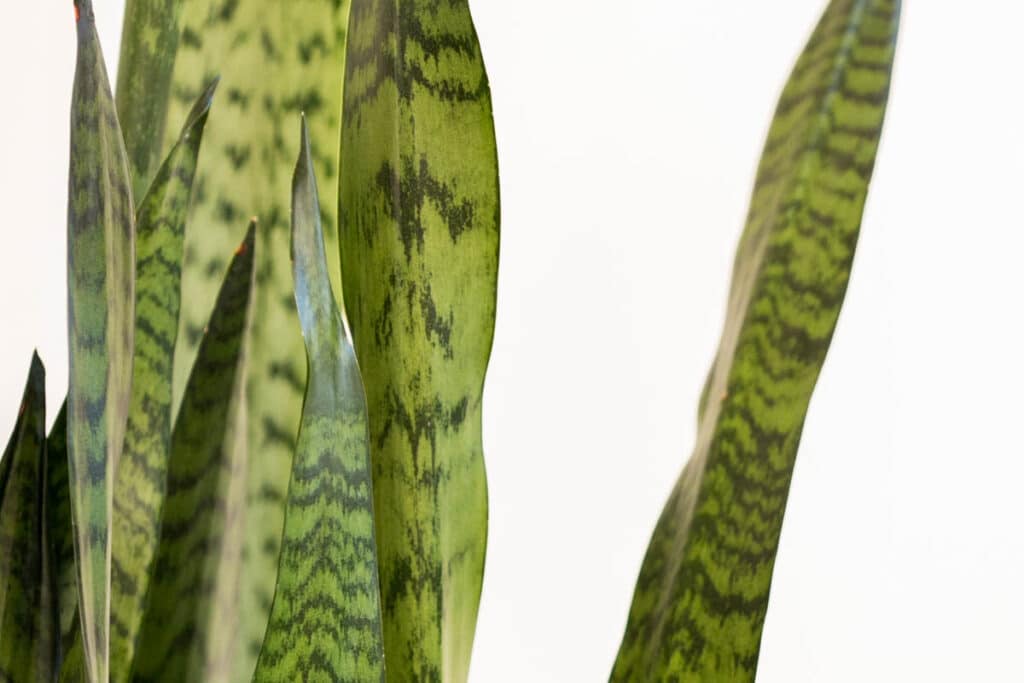
Best Resources
These are some of the tools and supplies you may need to properly water your snake plant:
- Terracotta Pot
- Soil Moisture Meter
- Potting Mix
FAQ’S
You should never water the leaves of a snake plants. This is because the leaves do not collect water, the roots do, and watering sitting on the leaves of indoor snake plants can lead to problems such as rot.
An over watered snake plant will have droopy, yellowing leaves. The leaves may develop brown spots and may even begin to fall over. Your plant may also have a foul smell to the soil.
Over watering a Snake Plant can cause it distress and kill it!
No, snake plants are easy to keep alive and are incredibly easy to grow and care for!
Snake plants are desert dwellers can survive a very long time without water. Typical watering methods are every 2 weeks to every 2 months, depending on climate.
Yes, snake plants need drainage holes in their container. If a snake plant does not have drainage holes in it’s pot, water cannot seep out of the bottom of the container. This can cause root rot and eventually kill the plant. If your container does not have drainage holes you can drill a few in the bottom of the pot.
Conclusion
We hope you enjoyed learning about how often to water snake plants and all the many nuances of their hydration needs.
In the end, snake plants are truly one of the best plants for a novice house plant owner. They require very little care of if you neglect or over water them there is a significant chance that they will survive.
Snake plants will purify your air for you and bring you joy, making them a great addition to your indoor decor.
Let us know how your snake plant growing is going in the comments below!

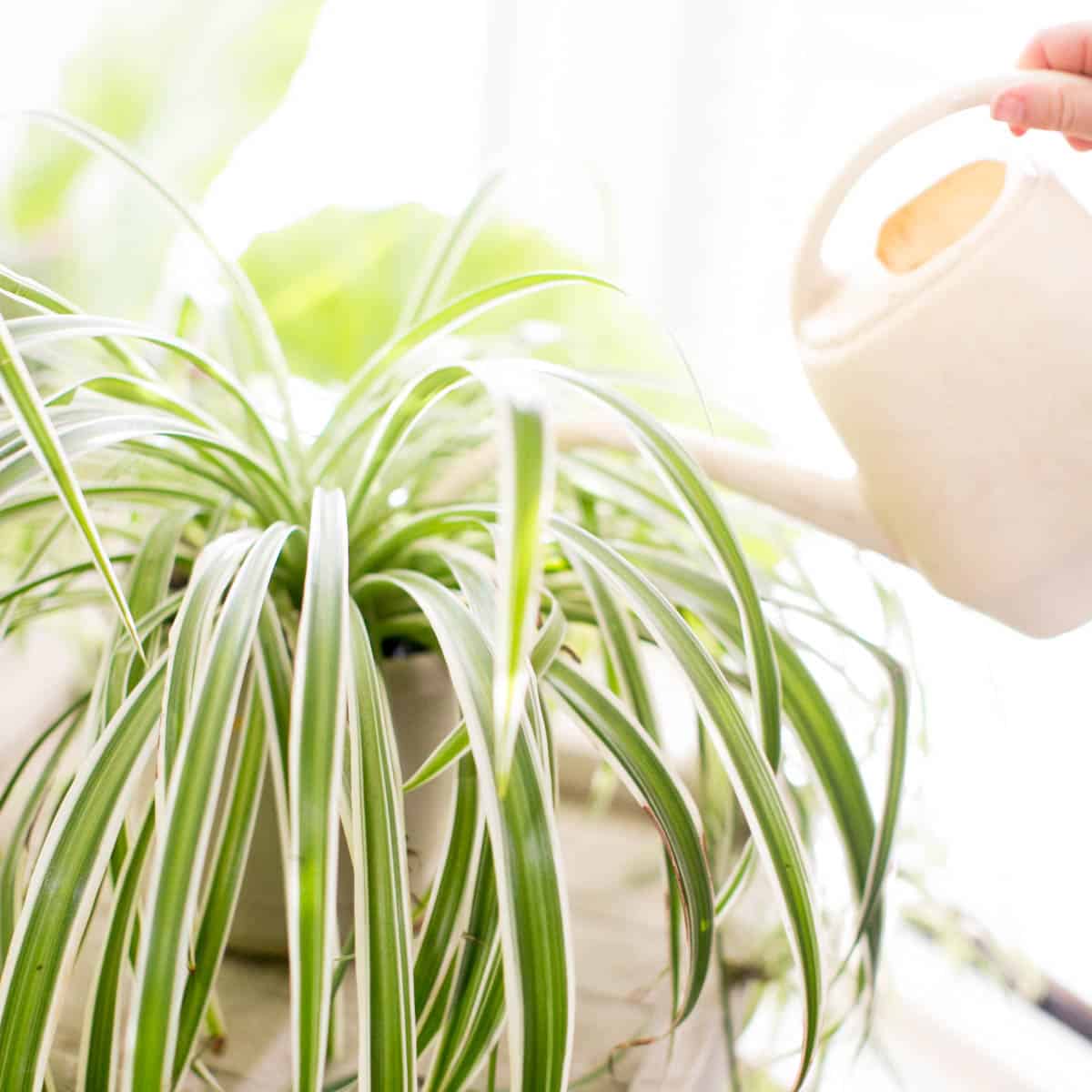
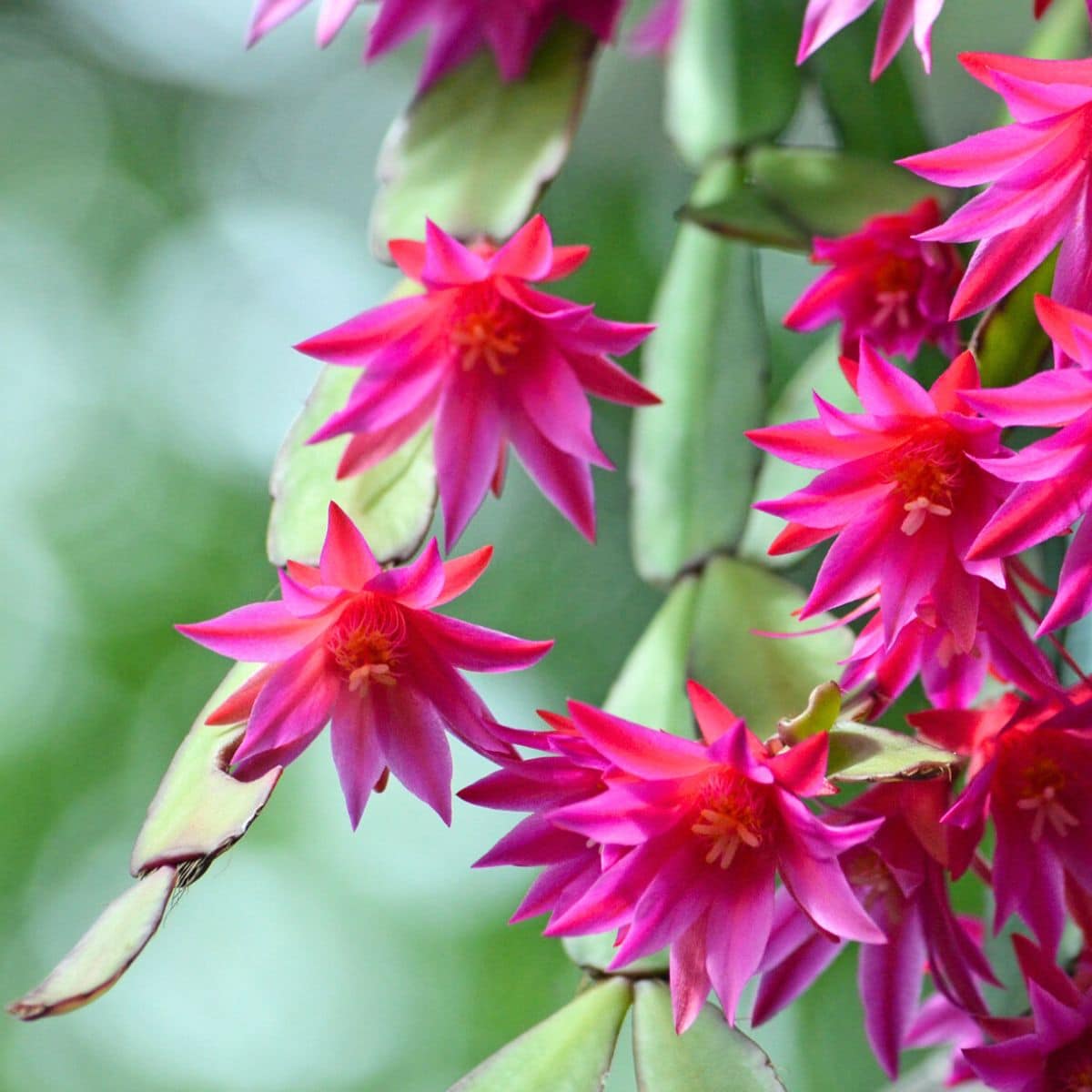
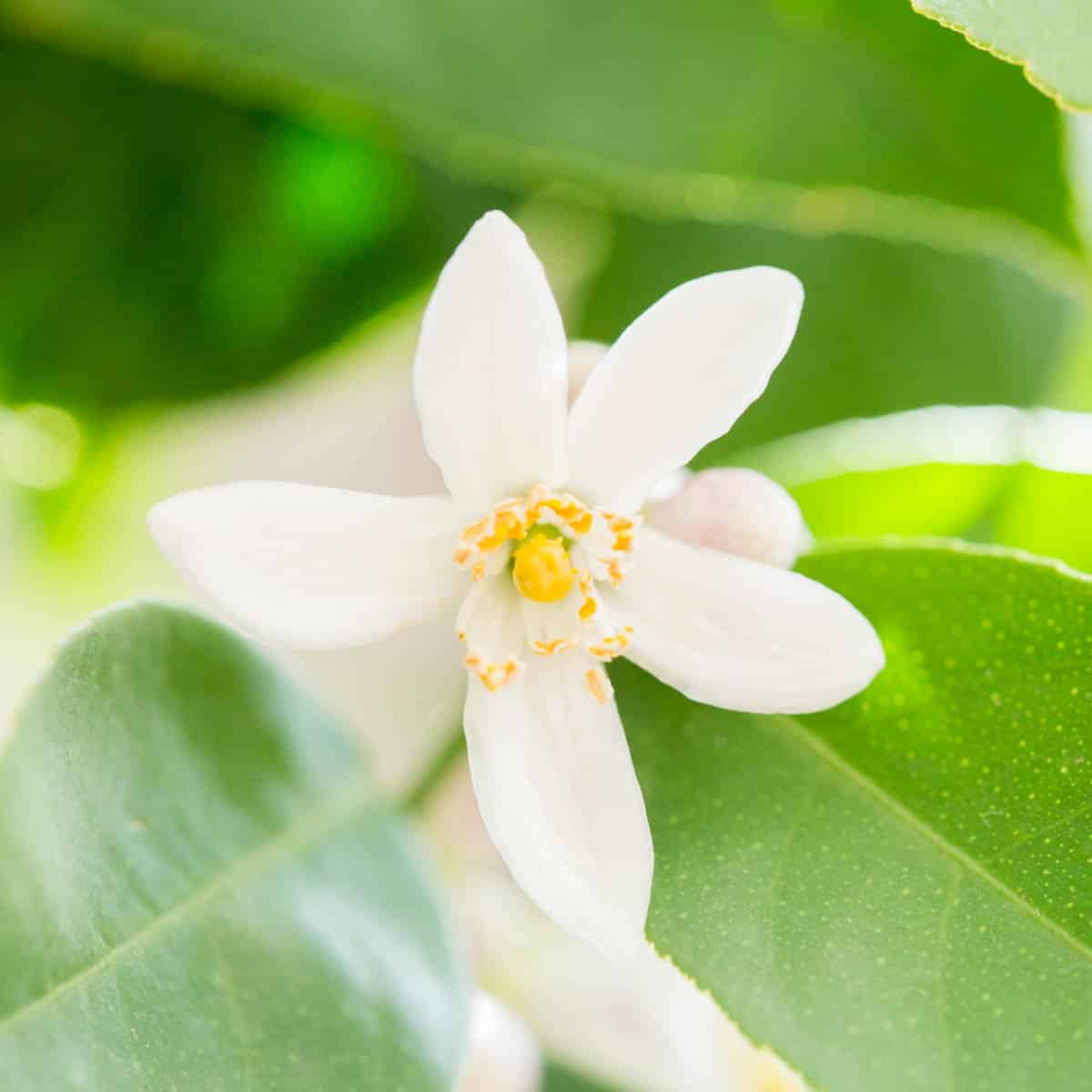
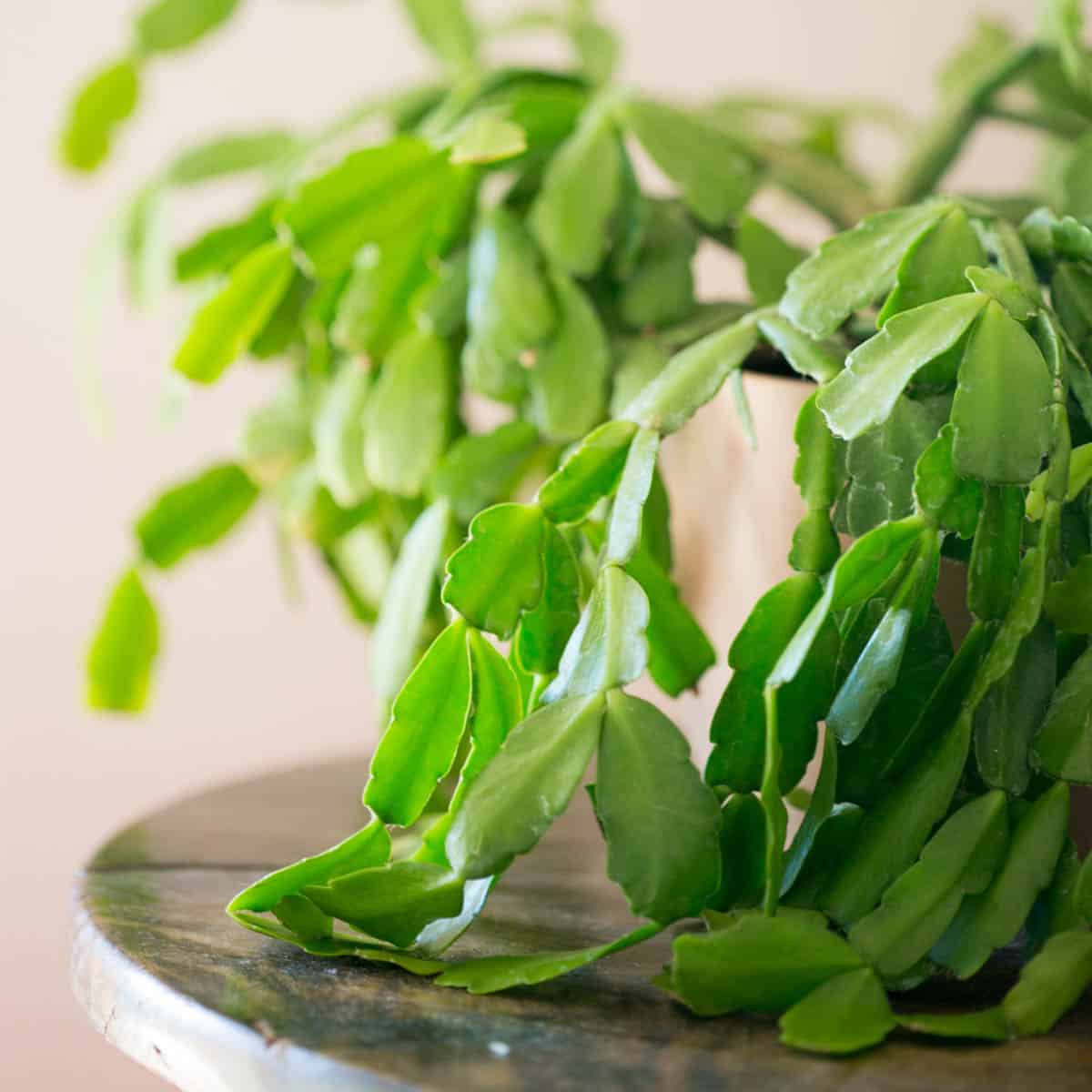
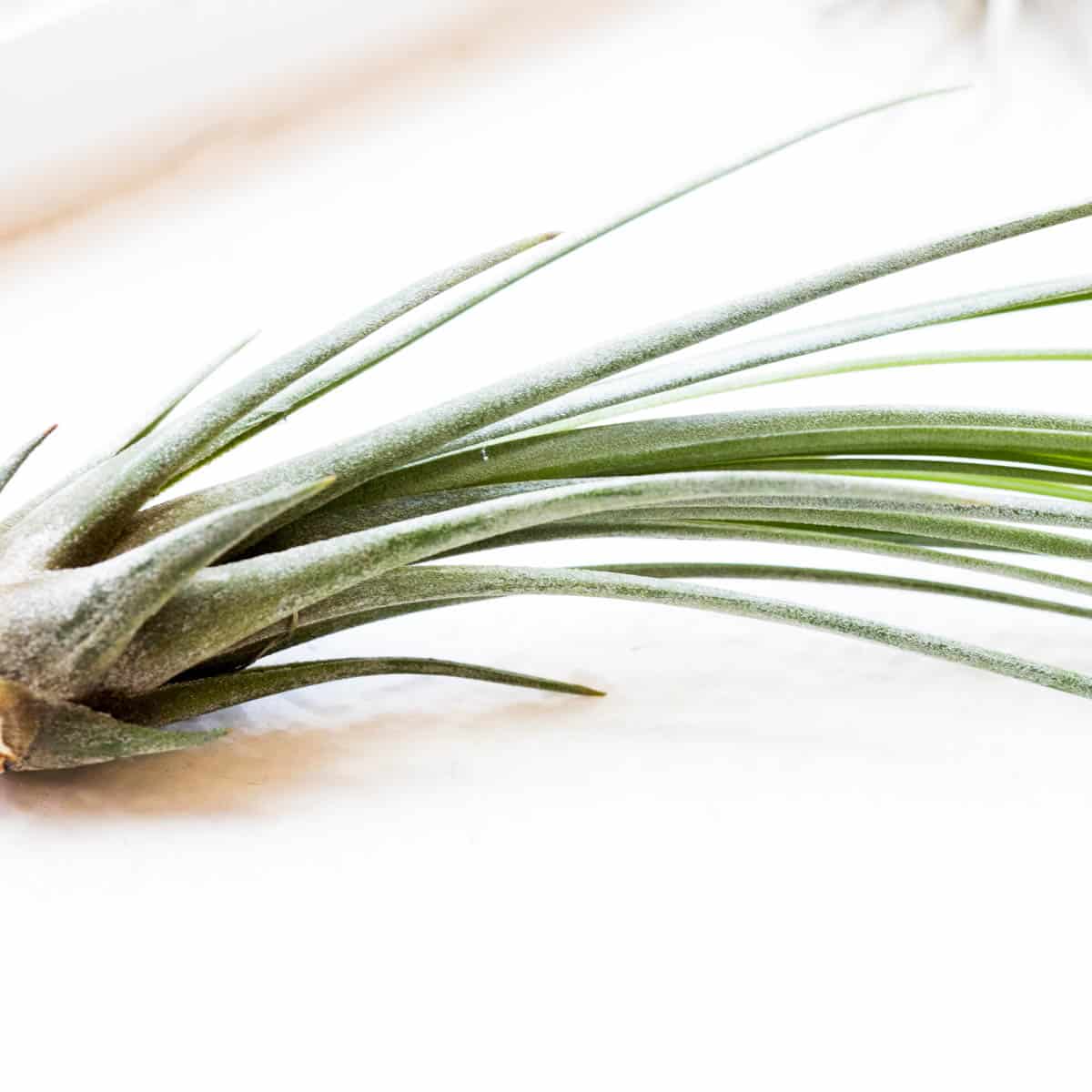
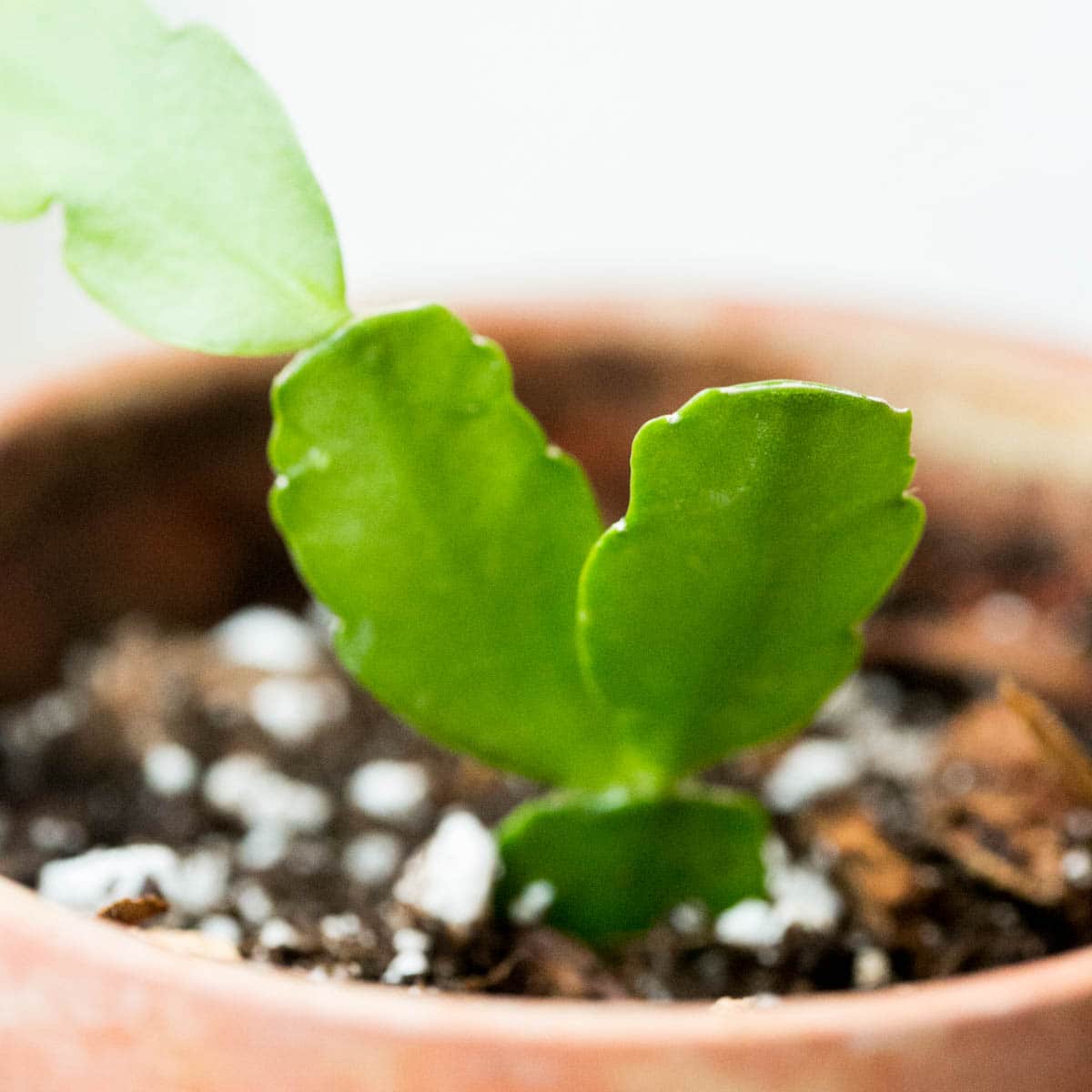
Excellent!